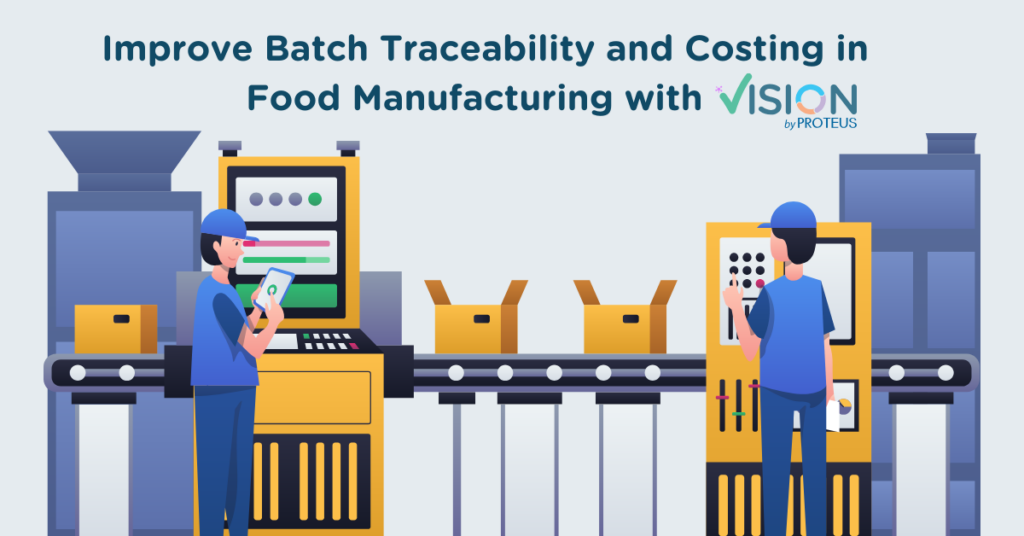
In the food manufacturing process, two things matter a great deal: knowing precisely where your ingredients are coming from and at what is the cost of each batch of products. These processes, called batch traceability and batch costing, are so fundamental to safety issues, quality, and keeping the costs in check. Such chores can be made easier, quicker, and more accurate with the right ERP system like Vision ERP which has specifically designed templates for food manufacturing.
Batch traceability means tracking every ingredient at every step, and every product batch. So in each batch manufactured you should get to know the batch of the raw materials used. In the event of a recall due to contamination, with an ERP system, it can immediately identify which batch has the problem so that only that batch should be pulled off the shelves. With Vision ERP, you would be able to locate and trace:
Batch costing is important since it represents the determination of the exact cost involved in producing a certain batch of products. Since ingredient prices change quite often, it is important to get the accurate cost so that products can be correctly priced and the profit margins can remain stable. Besides the ingredients you have to load the cost of the overheads on the finished product. This is made easy by using an ERP solution which has a provision for accurate batch costing.
It helps in tracking material costs by recording the price paid for every component in real time. This gives you an actual cost of every batch that you have finished.